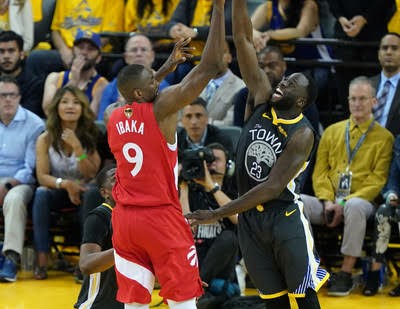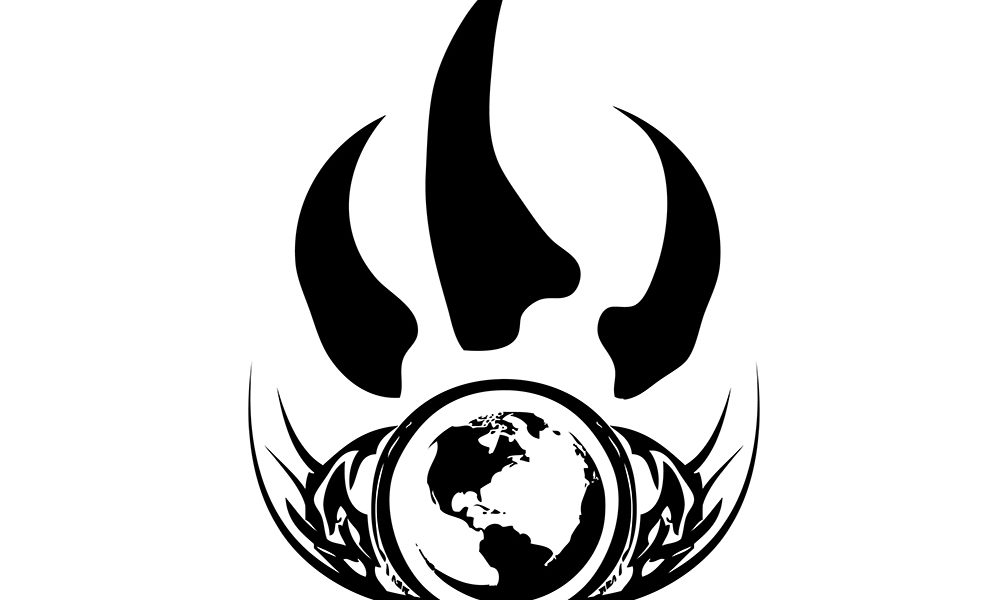To the surprise of no one, the NBA is trying very hard to finish it’s season. Players and owners alike have a watchful eye on dropping revenue, and will do their damndest to mitigate the financial losses that COVID-19 has subjected to their sector. Naturally, there’s a lot left to figure out before anything pops off and based on testing, personnel, quarantine and the possible complications of anything going sideways, it’s going to be a very large amount of work. However, the NBA seems determined to get to the finish line – so I’ve decided to rank the top 100 players to finish the season.
I’ve familiarized myself with every player on this list by watching games, film, and doing stat and play-type research to try and round out any blindspots. If you disagree with any of the rankings that’s all well and good, and you can even say I’m dumb if you so choose. It’s hard to rank 100 players, and I just hope the write-ups are accurate to the player, entertaining, and worthwhile. Thanks for reading.
Before we begin:
- If a player hasn’t played prior to the season’s suspension, they are not considered for the list. Ex. Kevin Durant, Klay Thompson, John Wall.
- This list is made with the assumption that the teams would finish the 82 game season. That isn’t a likely outcome, but the list was made with that in mind.
- If a player has an existing injury that is expected to keep them out going forward, they are not considered for the list. Ex. Kyrie Irving, Clint Capela.
- There is an aspect of momentum to these rankings. If a player was coming on particularly strong at the end of the season (Christian Wood, Malik Beasley) their finish is rated higher than their start.
- I have guest blurbs on a few players from writers I admire and their names will appear next to their blurbs.
- Thank you to resources that make these things much easier: Bball Index, Basketball-Reference, NBA.com/stats, and Cleaning the Glass.
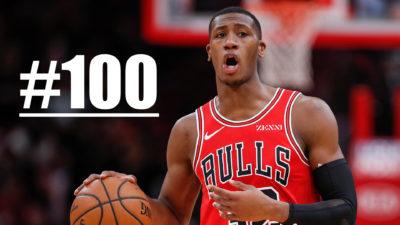
Kris Dunn – Chicago Bulls /
Via Blake Murphy (@BlakeMurphyODC)
It’s not exactly a secret that I’m so fond of Dunn, who I think is among the best defenders in the league. There might not be a better creator of havoc within a solid defensive foundation than Dunn, who has been between the 93rd and 100th percentile in steal rate and between the 80th and 98th percentile in block rate among point guards in all four of his seasons, per Cleaning the Glass. Player Impact Plus-Minus, RAPTOR, and BPM 2.0 all grade him as a top impact defender, too, which makes sense since the Bulls cobbled together an average defence thanks to a highly successful mid-season starting five that included Dunn. Dunn’s 3-point shot regressing back to a non-factor hurts his overall value, but he also took a big step forward as a finisher (64.7 percent within three feet) on greater volume (from 25.7 percent of his attempts to 39.8). That’s not enough to make him an efficient offensive player overall – his role shrunk as a scorer and playmaker – but it’s enough to keep his elite defence on the court.
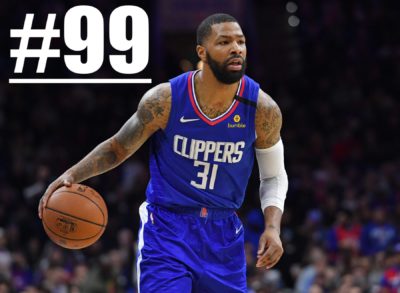
Marcus Morris – Los Angeles Clippers
Since arriving in Los Angeles, Marcus Morris has had a whole new set of quirks and rhythms that require adjusting to. The promise that he showed in New York as a plus-size wing who can pour it in from downtown hasn’t evaporated, though. Morris has been honing his 3-point shot since he came into the league and this year he vaulted himself into the top 40 in makes. Not to mention he’s one of twelve players in that top 40 that’s shooting above 40-percent from deep for the season. The high-post touches and pick n’ roll possessions have gone away since he joined the Clippers, but Morris still packs a real offensive punch. When teams lock into the corner three in the postseason, Morris can slide comfortably above-the-break and remain just as dangerous.
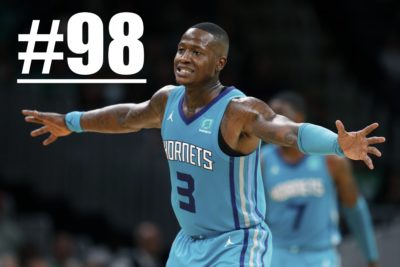
Terry Rozier III – Charlotte Hornets
Many NBA pundits questioned the Charlotte Hornets pursuit of Terry Rozier III in last years offseason. Rozier III seemed to have plateaued in Boston, and his reputation as ‘the untradeable one’ was crafted into a pillar of arguments about the Celtics ceiling and how they had poorly managed their assets. Well, it turns out Rozier III had more growing to do.
While leaving the cozy confines of Boston’s defense has left him a little bit more exposed on that end, the fresh air of Charlotte has allowed Rozier III to dip his toes further into the playmaking pond. With this growing awareness of teammates, driving lanes have opened more often for Rozier III as he’s become more opportunistic in getting to the rim and the free throw line. On top of all of that, he’s having a career year from behind the arc (40+ percent). In a lot of cases more usage carries with it a dip in efficiency, but Rozier III has taken hold of his place with the Hornets and stepped his game up in nearly every conceivable way.

Brandon Clarke – Memphis Grizzlies
Brandon Clarke was immediately identified as a steal when he was selected 21st overall in last year’s draft. Clarke has gotten more adept as a defender as the year has gone on, utilizing his quick feet and incredible burst to navigate in the Memphis defense, but that’s not why he made this list. Clarke grasped, very quickly, exactly how to find efficient offense as a big man. He’s one of the NBA’s most explosive dive men, soaring through the lane and scoring at an absurd 1.48 PPP (Points per Possession) on the roll, which puts him in the 95th percentile. Helped some by the fact that he shoots a gobsmacking 78-percent at the rim, and on top of that he’s surprisingly adept with his push-shot in the 8-16 foot range. When he’s left to create he can leverage his decent outside shot against a defenders will to leave their feet. If they stay grounded he can let it fly, and if not, one dribble and a gather sees him all the way to the bucket. He’s one of the most dynamic young bigs in the league.
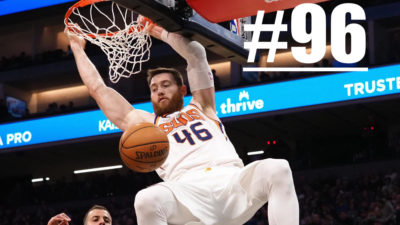
Aron Baynes – Phoenix Suns
Long gone are the days of the typical NBA “bruiser”. Bill Laimbeer’s most obnoxious antics wouldn’t fly today, but many aspects of his game are still welcome, you just have to add a bit more finesse and a great deal less elbows. Aron Baynes is a modern day bruiser. He sets punishing screens, bulldozes his way around the court in pursuit of rebounds and loose balls, and he’ll box out any warm body within 40 feet of him (top-10 in box-outs per nba.com/stats). As for the finesse, Baynes has added a somewhat respectable 3-point shot to his game (1.4 makes per game on 35-percent shooting) that adds a nice chunk of spacing to a Phoenix offense that wants to give Devin Booker all the room in the world to work his magic. If you’re ever tuned into a Suns game watch for when Booker and Baynes share the floor. Baynes is almost never stagnant, as he’s floating all over the court trying to lay down as many screens as humanly possible. It’s as if he takes great pride in being an obstacle for everyone he opposes. He’s no All-Star, but he flourishes in the trenches of the game, creates space for Phoenix’s offensive stars while laying a pounding on the defenders giving chase, and helps clean up the defensive glass.
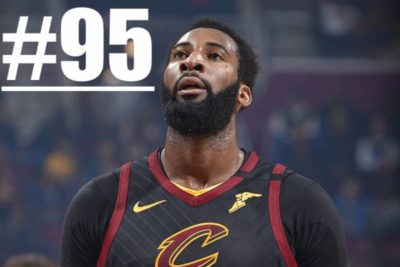
Andre Drummond – Cleveland Cavaliers
As the promise of the Blake Griffin/Andre Drummond front-court faded away in Detroit, the Pistons took a long hard look at Drummond’s expiring deal and shipped him off for spare parts (sorry John Henson, you’re actually good) and cap space. Drummond’s offensive limitations and depreciating defensive game have left him in a weird place in the NBA landscape. Although, there’s few players in the league who can win battles under the basket more consistently. Drummond gobbles up rebounds at an astounding rate, and while it’s impressive, it’s not valued like it used to be – and maybe that’s not quite right.
No doubt Cleveland saw an opportunity to grab Drummond, as his game is rather “loud”. And even though “loud” doesn’t necessarily equate to winning basketball, a lot of the time “loud” is seen as somewhat valuable in a front office sense. It’s also not quite clear what Cleveland will do with their center situation (Tristan Thompson, Larry Nance Jr., Drummond) this offseason. They might try to slide Drummond’s glass-eating and underrated playmaking flair next to their young trio of Darius Garland, Collin Sexton, and Kevin Porter Jr. – Drummond is only 26, and there’s plenty of precedence for athletic big men turning things around.

Aaron Gordon – Orlando Magic
Few players in the league can jump like Aaron Gordon, and even fewer combine that jumping ability with an in-air creativity that is rivalled by even fewer all time. The rub with Gordon (and any player with incredible athletic gifts like him) is how he translates those athletic gifts into meaningful basketball production. Gordon is overwhelming coming downhill and towards the rim, especially with an open lane. When the lane is filled up, though, his decision making leaves a lot to be desired, and his mediocre stroke from downtown and current role leave him in a middle ground that he has trouble navigating. And still, his upside remains sky-high. He’s a willing defender who, with Jonathan Isaac’s help, did a pretty good job of blanketing Kawhi Leonard and directing him away from the rim to kick off the NBA playoffs last season. He adds an adaptability to their defense (a good defense, too), and he has reliably developed some ball skills. There’s a lot to like, of course, but the Magic are waiting for it to manifest in a more consistent way.
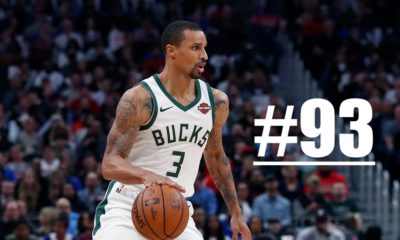
George Hill – Milwaukee Bucks
George Hill is deeply and remarkably competent at what he does within the framework of the Milwaukee Bucks. He’s the NBA’s most efficient 3-point shooter, is the proud owner of a 3:1 assist to turnover ratio, and he’s a conscious team defender. He can operate on-ball as the Bucks run through sets to shake Khris Middleton loose of his on-ball defender, or find Brook Lopez trapping a wing in the post after a switch. Or, he can relocate around the three point line as the defense scrambles to stop the overwhelming Giannis Antetokounmpo. His role is smaller than players behind him on this list, but the NBA isn’t about having five guys on the court with huge roles, it’s about having five guys who maximize the role they’re in, no matter the size. After Eric Bledsoe’s disastrous finish to the postseason last year, it makes more sense than ever to have a player like Hill, who can close games in a pinch and do it exceedingly well.
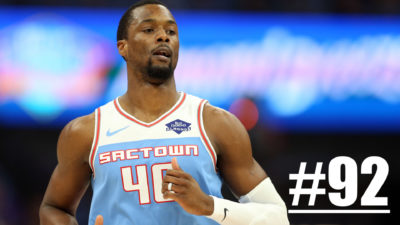
Harrison Barnes – Sacramento Kings
There’s a lot of utility in a player that can go and get you a bucket. The problem, as ever, is finding the right pockets of the game to deploy a bucket-getters talents, and when to lean on the team’s overall offensive ideals/scheme. Harrison Barnes has become a tricky player to rate in the NBA, because he is a bucket-getter, but his decision making leaves a lot to be desired. He can work in the mid-range, out of the post, as a ball handler, and he can spot up. There’s a lot to like about Barnes’ game, and it’s why he’s received two sizeable paydays in the NBA. The Kings knew the limitations in his game when they re-signed him and rather than ask him to become a top-10 wing in the NBA, they wanted him to slide in smoothly next to De’Aaron Fox & co. to become a high quality tertiary option. Barnes has delivered on that, for the most part. He’s worked more often in the pick n’ roll than isolation, and done so at a decent efficiency. He brings size and a willingness to defend to the less glamorous end of the floor. Most importantly, though, he’s remained a more than decent shooter from downtown and is quietly hitting a career high mark in assists despite seeing less of the ball.
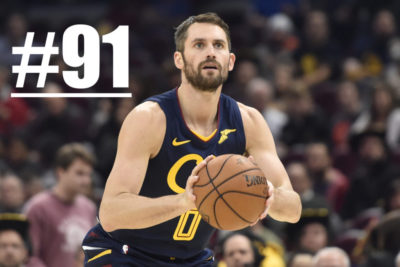
Kevin Love – Cleveland Cavaliers
It’s been talked about a lot this year; Kevin Love isn’t exactly happy with his situation in Cleveland. Whether it was frustrated displays on the court, or lashing out behind the scenes, it became news. Recruited specifically for the purpose of winning championships next to LeBron James, and now left in the aftermath of his leaving for Los Angeles. An advocate for mental health league-wide, and well liked within the Cavaliers dressing room. On the floor, Love still brings a sweet shooting stroke and unbelievable nose for rebounds. He’s a skilled big man who can jumpstart a fastbreak quicker than you can say “outlet”, but his defense has fallen considerably. That’s notable, because his defense was never a prominent part of his game to begin with.
In spite of defensive limitations, though, Love can take over the Cavaliers offense for long stretches at a time. Operating as a hub with the ball in his hands, overseeing cuts to the rim and handoffs. There’s no question Love’s spot on this list would improve tremendously if he found himself on a team that wasn’t in the midst of a rebuild, but thems the breaks. There’s always the possibility of a renaissance season in the future. For now, Love is laid back in Cleveland.
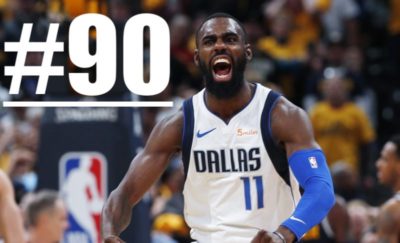
Tim Hardaway Jr. – Dallas Mavericks
We’re in the midst of Tim Hardaway Jr.’s best year as a pro by a significant margin. A popular adage is that a rising tide lifts all boats, and it’s cited as wisdom for a reason. Luka Doncic’s presence has allowed for a lot of other Mavericks to put forward the best version of themselves. Hardaway Jr. is adept at finding soft-spots in the defense that Doncic’s presence creates, and Doncic is finding him for high quality catch and shoot opportunities, and of those that come behind the three-point line he’s cashing in 43-percent of them. The Mavericks like to utilize Hardaway Jr. as a screener for a lot of primary actions, which is good because he’s a talented shooter who can pop afterwards. However, these actions will often times transition into Hardaway Jr. receiving the ball in motion and getting to attack a moving defense. While Hardaway Jr. has failed as a top-two creator on teams, his ball skills rate highly for an ancillary option like himself, and he can hit shots at every level of the defense. The Mavericks recognized his value early on and moved him into the starting lineup, and he’s been out-performing his role since. It’s impressive that Hardaway Jr. was able to transition from being the Knicks gunner last year to sliding in so seamlessly with the Mavericks.
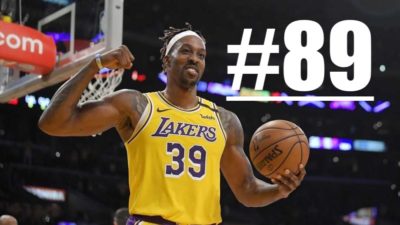
Dwight Howard – Los Angeles Lakers
Left to scramble a bit in the offseason, the Lakers assembled a massive front-court to lean on defensively and asked LeBron James to sort things out on offense – and it paid off. Dwight Howard came to the Lakers ready to fight on defense and sky for alley-oops. The malaise on defense and dedication to post-ups on the offensive end that had defined the latter half of Howard’s career has gone up in a puff of smoke. After his arrival in Los Angeles in 2012 (and the back injury, of course) signalled the downturn of his career, it’s only right that Howard should recapture so much of what made him special in that very same place.
He’s an invaluable cog in the Lakers top-3 defense, as his teammates are happy to funnel players toward his intimidating presence at the rim. He’s even shown an ability to step out on the perimeter in late-clock scenarios, and catch up if he allows a blow-by. He isn’t the *exact* same player who won 3 DPOY’s in a row, but every Lakers game you watch you can see that raw defensive talent unleashed a couple possessions at a time. Simplifying his offensive game has been a boon for him and the Lakers. He’s dunking a higher percentage of his shots than ever before (almost 50-percent of his makes are dunks. Moving away from the frigidity of his post-ups and towards the dynamism of his rim-runs has allowed Howard to shoot nearly 80-percent at the rim. It’s been a hell of a comeback.
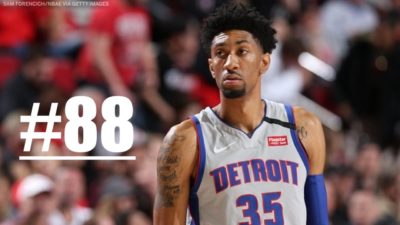
Christian Wood – Detroit Pistons
Like I said at the top, there is an element of momentum in these rankings. The moment Andre Drummond got traded, Christian Wood was set loose and didn’t look back. More rim-running opportunities and more lobs meant that Wood could show off that jaw-dropping length and agility when he was in attack mode. Since being inserted into the starting lineup his usage rate has ballooned over 25-percent, his true shooting has eclipsed 65-percent, and he’s averaged 23 points and 10 rebounds a game. He’s lightning quick on the dive, beating the help-side to the rim with regularity, but maybe even more impressive is his ability to leap over or around the defender when they’re at the rim. Like many explosive young bigs, he’s a bit overzealous on defense and doesn’t always find himself in the right places. On offense though, he’s got a knack for finding the soft spots and exploiting them, whether he’s punishing dropping bigs with his 3-point shot or sneaking into the dunker spot. Wood looks poised to take similar steps offensively as John Collins did.
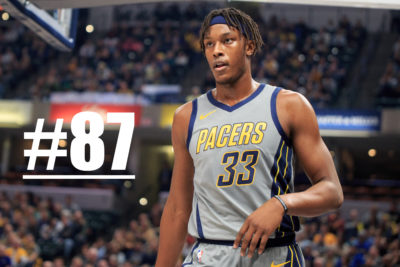
Myles Turner – Indiana Pacers
There’s no substitute for length in the NBA. Some players seem to have a preternatural ability to read what’s happening on the floor, but you can’t recreate the impact of a long and willful arm jutting out to protect the rim or disrupt a passing lane. Myles Turner is prototypical in some ways. There’s an efficiency to how his body developed that makes him look exactly the part of a 2020 Center. Quick enough feet to gamble and corral, long enough arms to recover, and it all sits on a 6’11” frame. It’s important, though, that Turner doesn’t rely simply on his length or ability to sky for blocked shots – he’s made significant strides in how he moves within Indiana’s defense and operates as it’s anchor. The blocked shots are no longer revered above all else (of which he still gets a lot), and perhaps taking notes from Brook Lopez and Marc Gasol, he realized you don’t have to jump to utilize your length or size.
His touch is softer than Charmin and at only 23 years old he has years to build on a solid foundation as a shooter. Turner has hit a bit of a wall in his progression offensively, though. With Domantas Sabonis’ ascension on the inside of Indiana’s offense, Turner has been relegated to the outside more often than not. Over 44-percent of his attempts are coming from behind the three point line, and while it’s true that he fits that role better than Sabonis, he’s become an inconsistent offensive provider. ‘3 and D’ shouldn’t be the end game for a player of Turner’s ilk of course, but in this role, he’s still providing a lot of value to the Pacers.

Jaren Jackson Jr. – Memphis Grizzlies
Jaren Jackson Jr. hasn’t had an incredible season, but that doesn’t mean he’s had a discouraging one. ‘JJJ’ is simultaneously the Grizzlies worst front-court defender and a shining beacon of hope for the future. I’m as comfortable putting him this low as I am saying he’s going to be a really, really good player. It’s tough for big men to put it all together in the NBA – I mean, Karl-Anthony Towns is still a disaster defensively – and ‘JJJ’ has so many things to combine and figure out. He’s in-between a ‘4’ or a ‘5’ (think Anthony Davis) he gambles and fouls too often on defense, and he’s a mediocre rebounder. However, his athleticism, insane (and well deserved) confidence from 3-point land, his length, and his explosiveness on the dive make him one of the most tantalizing prospects in the league. It’s rare to see a player with his physical profile pull-up with such reckless abandon from downtown and rarer still to see him hitting at nearly 40-percent. There’s a version of ‘JJJ’ in the future that is one of the most unique offensive big men of all time, and the Grizzlies are happy to endure the ups and downs on the way there.

Kelly Oubre Jr. – Phoenix Suns
A swingman who can do a bit of everything and has a keen nose for poster opportunities. Kelly Oubre Jr. has been asked to grow alongside Booker and Ayton, and he’s taken meaningful steps as a shooter and a ball handler, while still maintaining an electricity in transition and his wily presence as an on-ball defender. His finishing at the rim (dunks excluded) leaves a lot to be desired, but he has the athleticism and length to improve in that area. The wing position has haunted Phoenix for years and years, but Oubre Jr. is a sight for sore eyes slotting in next to Booker & co. with the occasional duck in to abuse a guard in the post, a stolen point to wing pass, or a lightning quick burst to punch through the seams of the opposing defense. Depending on the game, Oubre Jr. can really pop off the screen and the next step is making that more of a regularity. Despite a disappointing record this year, the future in Phoenix seems to get brighter by the moment, and Oubre Jr.’s flash and energy is a nice piece of it.
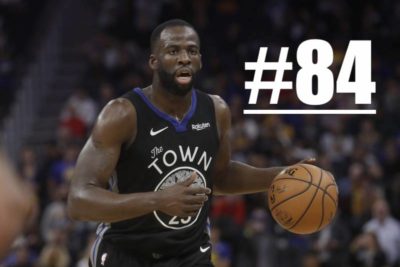
Draymond Green – Golden State Warriors / Via @Nigerianscamssss
Second-round pick, 35th overall, 3x NBA Champion, 3x All Star, 3x NBA All- Defensive Team 3× NBA All-Defensive First Team (2015–2017), 2× NBA All-Defensive Second Team (2018, 2019) and NBA steals leader (2017). Draymond Green’s resume reads like that of a Hall Of Famer, but he remains divisive. Draymond wears his emotions on his sleeve and doesn’t hide how he feels, hell ask Kevin Durant.
On the court, you have to love and respect a player like Draymond; he does all the unsexy things that you need. He plays defense, hard, can guard 1-5 and he makes it easier for players like Steph and Klay. He is one of those that you hate to play against but love to have on your team. Steph Curry is the face of the Warriors, however, Draymond Green is the emotional leader. Basketball is a team sport; maybe people need a reminder that it is not 1 v 1, it’s 5 v 5. Draymond doesn’t need to score, that is not his role. The scoring is for Steph and Klay, sure Draymond will chip in here and there, especially with his backpack shot. Draymond is there to be a problem on the defensive end, cause mayhem, set screens on offense, and get under your skin. Whether you like him or not, one thing that we can all agree on, Draymond Green is a dog. His basketball IQ is high and was an integral part of The Warriors championship runs. In the midst of a season where Steph and Klay were out injured, KD injured but left for Brooklyn, he played poorly albeit with a roster lacking talent. Regardless, Draymond is one of the best in the league at what he does.

Joe Ingles – Utah Jazz
Joe Ingles and the Utah Jazz profile as something like a hand in glove fit. The Jazz recognized Rudy Gobert as their best player early on, but there were inherent limitations to how he provided offense. They also couldn’t hand everything over to their budding star, Donovan Mitchell. Enter, Joe Ingles: A deft playmaker who can run pick n’ roll at any stage of the shot-clock, make use of a rolling big, spray passes to any part of the floor, and space things out nicely for his aforementioned teammates with a dynamite stroke from long range.
He can slide into a couple different slots of the Jazz’s starting lineup, and he’s big and gritty defensively which fits well enough with the defensive ethos in Utah. During Utah’s most dominant stretch of the season (16-2 from Dec. 7th to Jan. 14th) Ingles saw a major bump in usage and minutes – starting every game in that span and averaging 16 points, 6 assists, and 4 rebounds on 52/53/92 splits. He’s a major weapon for Utah.
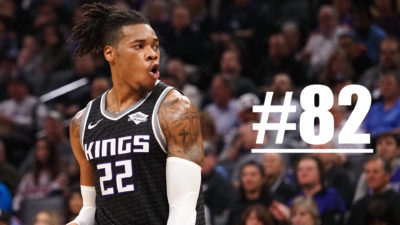
Richaun Holmes – Sacramento Kings
Criminally underrated in the NBA landscape, and perhaps too low on this list. Richaun Holmes is slick on the dive, capable of finishing with power or finesse, and quietly dangerous on the short-roll with his awkward but competent push shot. The Kings punted on Dewayne Dedmon early this season and handed the starting Center role to Holmes who quickly asserted himself as the best big man on the squad. Holmes can drop or hedge in pick n’ roll coverage and isn’t a stranger to dominant stretches of rim protection. He doesn’t clean the defensive glass as well as some other big men, but he’s a muscular worm on the offensive glass, soaring for put-backs and creating more possessions for the Kings. Even though the Kings have exciting young big men in Marvin Bagley III and Harry Giles III, Holmes is one of the best bargains in the NBA and figures to be a big part of a successful Kings squad.

Goran Dragic – Miami Heat
Kendrick Nunn has absorbed a lot of attention in the Heat’s backcourt, having thrown his hat in the Rookie of the Year sweepstakes (for a moment), but Goran Dragic is still the best guard on the Heat roster. There’s very little flash in Dragic’s game, because there’s nothing fancy about control. Dragic checks into the game to set the table for his teammates, get downhill against fumbling big men, and spot-up on occasion. The Heat roster has some specialists on their squad, and Jimmy Butler, Bam Adebayo, and Dragic fill in the rest of the holes. Dragic has aged gracefully as his fakes, jukes and overall shiftiness haven’t left him. He’s dangerous in the pick n’ roll, and an absolute headache to cover on dribble hand-offs – made much more dangerous because of how dynamic Bam Adebayo is. Defenses freeze in place when Dragic rocks the baby for a pass fake before calmly gliding to the bucket for a layup. Or when he commits his steps to a layup to draw the help-side defense and throws a behind the shoulder pass to a soaring Adebayo. Dragic is slick as hell, and the Heat are happy when he breaks out his bag of tricks.

OG Anunoby – Toronto Raptors /
Via Blake Murphy (@BlakeMurphyODC)
I sometimes wonder how Siakam’s otherworldly development has unfairly reframed Anunoby’s own growth. While it’s true that Anunoby took a step back in his sophomore year, it wasn’t difficult to understand why, and his rookie season was strong enough to maintain optimism. His third season brought a lot of pieces together – his 3-point stroke returned, he finished a little better inside with a nascent dribble-attack game and the play-making he’d flashed in tiny windows began to look like a legitimate secondary skill. Anunoby’s stats climbed in almost every category on a per-minute or per-possession/rate basis, with his impact metrics catching up to the eye test. Anunoby still has a ways to go in terms of role scope (14.4-percent usage) to develop beyond an elite role player archetype (which is a very valuable archetype), but he’s just about the ideal fifth offensive option within the Raptors’ top-seven. A lot of that value is tied up in Anunoby being one of the three or four best (and most versatile) isolation wing defenders in the league. He should earn an All-Defense nod this year, but don’t sleep on the within-type offensive growth he showed this year, too.
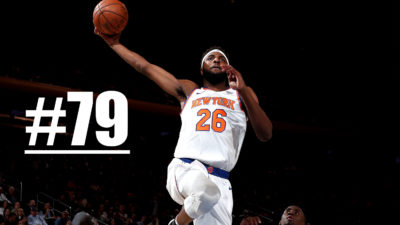
Mitchell Robinson – New York Knicks
Mitchell Robinson is a radical pogo stick. He’s as likely to jump a point-to-wing pass as he is to track back for an absurd block, which is quite often. He takes nearly every shot at the rim, converting a mind-numbing 75-percent of his attempts from the floor, and he gobbles up offensive rebounds with increasing regularity. He also has trouble staying on the floor because he fouls way too often, and he is, overall, a very erratic presence on the hardcourt for the Knicks. He’s one of the league’s premier shot-blockers and lob-threats, looking the part of an anthropomorphized skyscraper more often than a basketball player. Big men who make it tough to finish at the rim are extremely valuable, and Robinson can certainly do that. The lobs and blocks stand out to everybody, but Robinson has to fill out the rest of his game. The prospect of what that might look like is tantalizing.

Evan Fournier – Orlando Magic
Modest and meaningful improvements will never go out of style and that’s what Evan Fournier has brought to the Magic this year. Aaron Gordon, Jonathan Isaac, and Markelle Fultz add a layer of inconsistency to the Magic offense as they try to grow beyond themselves on that end, and Fournier and Nikola Vucevic do their best to hold things down in the meantime. Fournier’s pull-up game in particular, is a boon for the Magic’s spacing and ability to score points. He’s a reliable pick n’ roll decision maker and scorer, as he can score from most places on the floor and shoots a decent enough percentage to justify his doing so. The bump in 3-point efficiency he’s seen this year to go along with pop and stops in the lane has him hovering around 60-percent true shooting (a career high). Vucevic is the clear focal point of the Magic offense, but Fournier’s well-balanced game fits nicely next to it, while also making room for any type of offensive ascension from the Magic’s young guns.
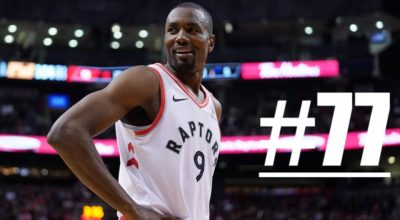
Serge Ibaka – Toronto Raptors
Serge Ibaka exists in a unique space in the NBA. He came in as a monstrous presence when he was prowling in the paint defensively, and he had to work hard to develop skills on the offensive end. The most interesting aspect of this, is that he didn’t skip steps in building himself from the inside, out to the 3-point line. He steadily added the in-between game, the repertoire on the block, the short-roll, the pop, and finally the three. It wasn’t expedient, and in doing so, one of the league’s rawest big men in 2009 has developed into a remarkably well-rounded player today. Defenses will concede soft-spots inside the arc, and instead of phasing out a player who can exploit that, the Raptors have utilized that part of Ibaka’s toolkit with great success. He fits in snugly around so many of the Raptors main guys, making him a constant threat to punish other teams for their lack of attention to him, or lack of size. He’s no longer a top defensive big, but has aged gracefully in that capacity, still hanging onto a shot-blockers intuition and an ability to bang on the boards for stretches. An unsung hero for the Raptors over the past two seasons. Willing to eat glass off the bench or rim-run with Kyle Lowry and the starters, Ibaka is a consummate pro.
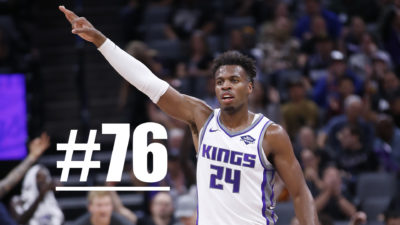
Buddy Hield – Sacramento Kings
Buddy Hield has struggled immensely in Luke Walton’s offense as a creator – one who isn’t a particularly effective dribbler or passer. He doesn’t plug in well to a fluid system with dribble hand-offs and dynamic cuts, and the Kings slowed down the pace a lot this year which robs Hield of some prime opportunities for threes and layups. Not only that, but Hield was removed from the starting lineup in favor of Bogdan Bogdanovic (who is good) and despite Walton’s insistence that his role is now synonymous to Manu Ginobili with the Spurs or Lamar Odom with the Lakers this is a strange transition for Hield, who signed a big extension at the start of the season. However, Hield is without a doubt, one of the best shooters in the NBA. He can pull-up, extend his range, catch and shoot, come off-screens, whatever you need he’ll bring it as a shooter. He’s still invaluable to the Kings as an offensive player despite his defensive limitations, and there’s no reason he can’t become one of the best 6th men in the league if this is his role going forward.
The next installment has been postponed. It will be released some time, but I don’t want to push sports coverage when there is so much civil unrest in Canada and America. The next installment will include players 75-51. Thanks for reading, and remember, if you disagree that’s okay.


